Thip Soulisak's Family Legacy Lives On Through His Lao Food Pop-Up
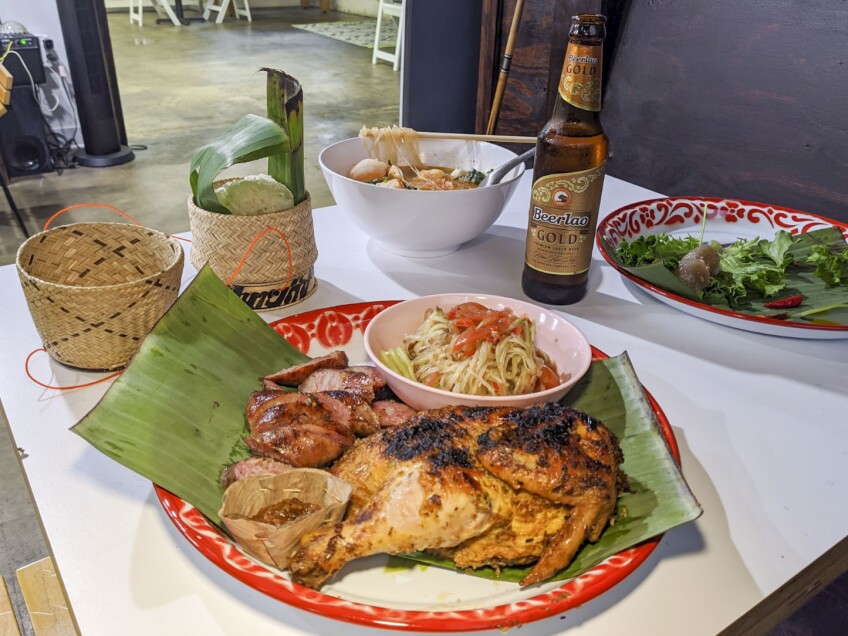
When Thip Soulisak moved to Los Angeles from Virginia, he came to fulfill his unique dream of becoming an event planner for the Hollywood elite. As he began coordinating more and more events, however, he found working with many of the unpredictable personalities of the industry stressful. To escape, he found comfort in watching Food Network and cooking dishes from cooking shows, such as Barefoot Contessa, as well as from recipes he'd find in various food magazines. His West Hollywood backyard became a gathering place as it was next to many bars and clubs. Friends came over for dinner daily.
The more Soulisak cooked, the more he missed his mother's cooking and wanted to learn her recipes. "My mother is a really good cook and cooking is how she supplements her income," he says. Soulisak began a path, taking after her and the recipes she created from their family's journey from war-torn Laos to Thailand, before landing in the United States. He called his mom on the phone to receive instruction on how to prepare her dishes — eventually preparing these family recipes for others.


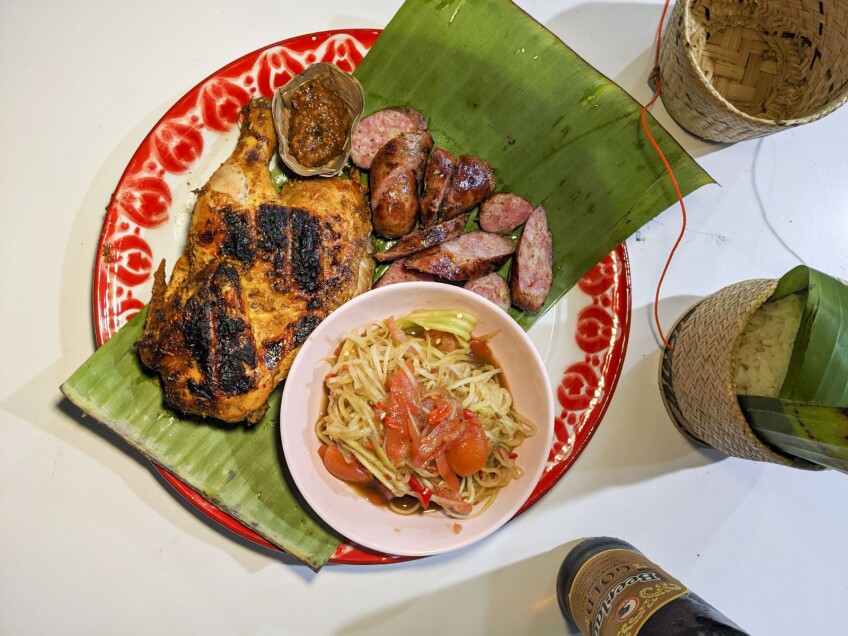


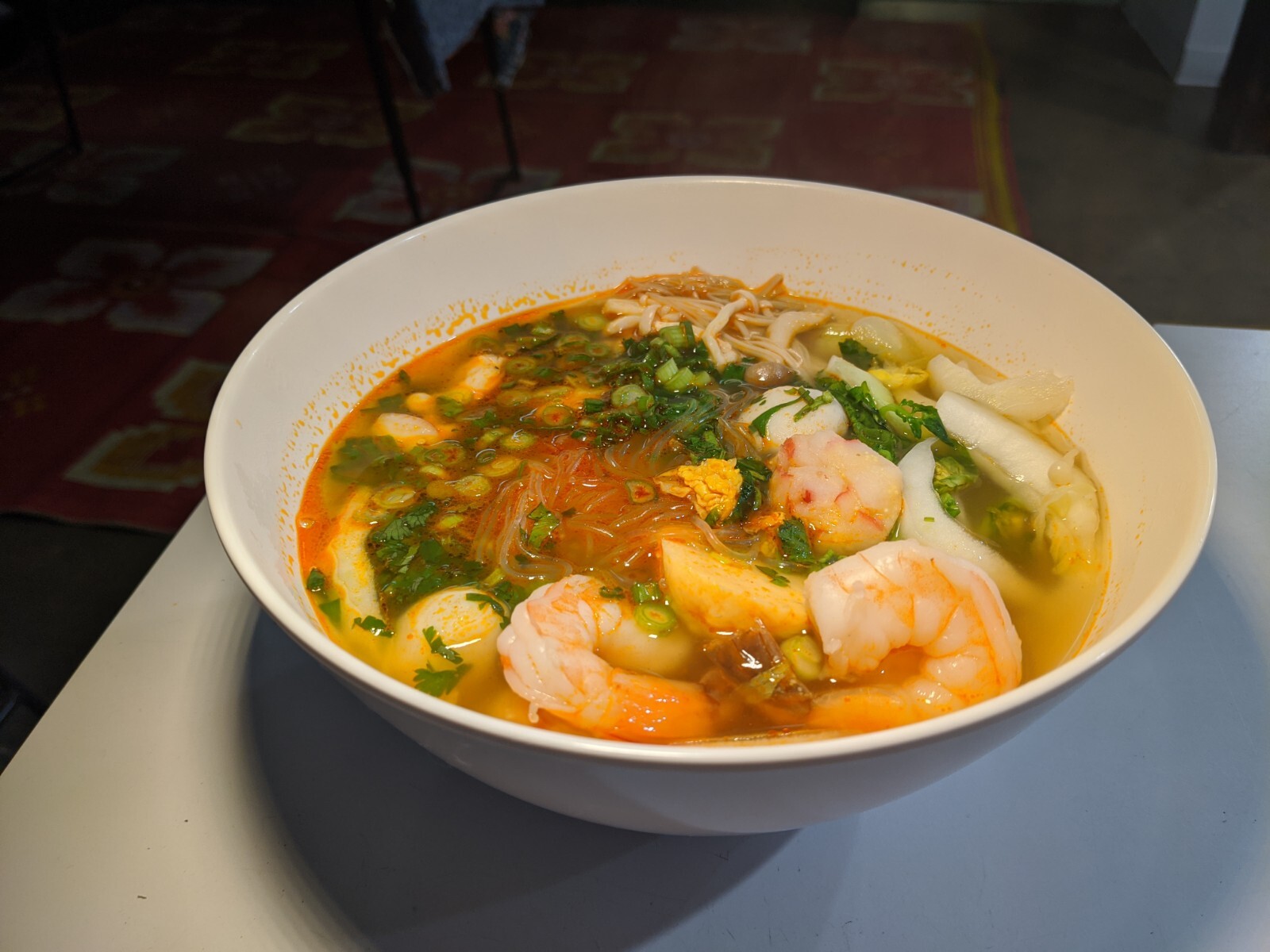
"I cooked for my friends and their friends on birthdays, which led to more and more people trying my food. Then they'd hire me, and that led to my first pop-up," he recalls. "And this was before I even knew what pop-up restaurants were. I'd never been in the culinary scene, but I just enjoyed cooking for others." When asked how he came to name his business, he explains: "The name 'PhoLaoSouphy is a play on words but I wanted to stress that pho is a noodle dish that is as embedded in Lao culture [as it is Vietnamese] because so many people don't know that. Like other noodle soups, the Lao version is similar in many ways but also has its own character."
Soulisak's event planning business began to take a back seat as he got more and more requests to serve his family's food. "People were willing to pay for Lao food and it didn't exist in many places in L.A.. Plus, I could feed other Lao people that miss [this food]. Others wanted to [try] Lao food — people who have never had it before," he explains.
More from The Migrant Kitchen
In a city — and country — where Thai food is so ubiquitous, so much of describing Lao food is how it is similar to or different from the familiarized food of its neighbor. But Thai food's higher visibility tends to obscure its confluence with that of so many other countries, like Laos. "Papaya salad actually originated from the Lao people. It passed to Thailand because the northeast side [where it is popular] is part of the Lao kingdom, but when the territory was redrawn, it became part of Thailand." Soulisak explains. "The central Thai version is what most people have had, which is sweet, tangy and kind of like a slaw. But the Lao version is very funky and very savory with a lot of fish sauce and spicier than what most people are comfortable with. It's almost a completely different dish [from the Thai version]."
Those full flavors in the Lao papaya salad represent a lot about what differentiates their food from their neighbors'. "A lot of that [flavor] comes from fresh vegetables and herbs, which we use a lot of. The most annoying thing is there are so many, and you have to pick, wash and strain them, and one little dish can have up to 5 to10 different herbs in there," Soulisak says. Lao food, he explains, also includes padaek (fermented fish paste), which is used in "every dish" and sticky rice as their staple grain.


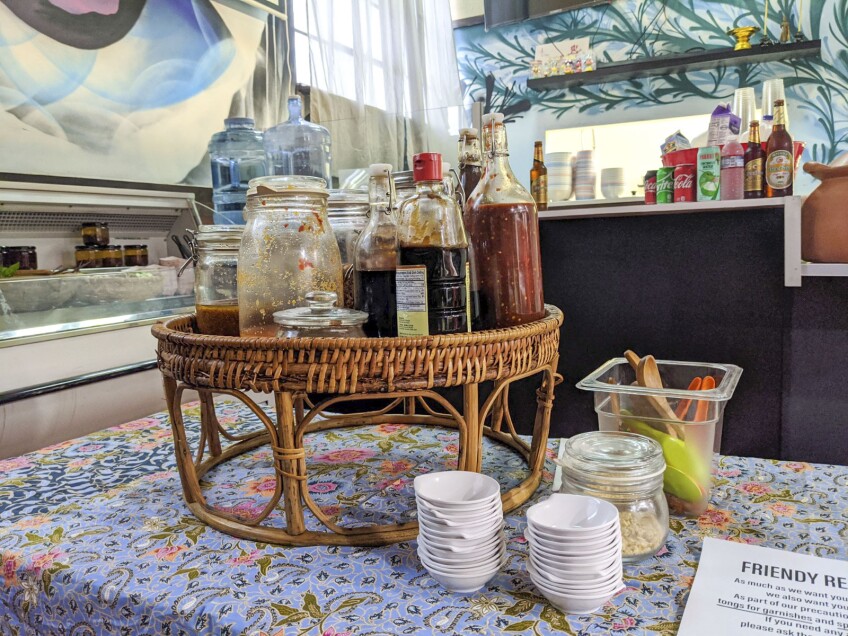

Lao food has faced an uphill battle in terms of accessibility for both the large California Lao population and the generally food curious. "For a long time, Lao people had a misconception that their food wasn't good enough or fancy enough because it's funky. It's not as pretty. And I came upon that a lot when I started on this Lao food journey. People told me the general public wouldn't be able to understand Lao food and a lot of people didn't think it was good enough. A lot of Lao business owners actually own Thai restaurants. It makes you wonder why they don't own a Lao restaurant, but it's because of that mentality," says Soulisak.
However, it was war with Vietnam, Laos' neighbor to the west, that brought Soulisak's family to the United States. His father's family fled at a moment's notice with his mother following afterwards, meeting up at Nong Khai refugee camp in northeast Thailand. It was there where Soulisak's mother ran a sukiyaki shop. Over forty years later, that mung bean noodle recipe would be featured at Soulisak's PhoLaoSouphy stand at the L.A. Times Food Bowl in 2019 with a long line wrapped around the corner. "When we went to the Food Bowl, it got an evolution in name. We called Refugee Sukiyaki. My mom learned to make it in the camp and it's something she can easily make. It's made with pork and chicken broth. We pop it with cellophane noodles, seafood and a dollop of sauce on it. The sauce is kind of reminiscent of the red sauce in a hot pot shop."
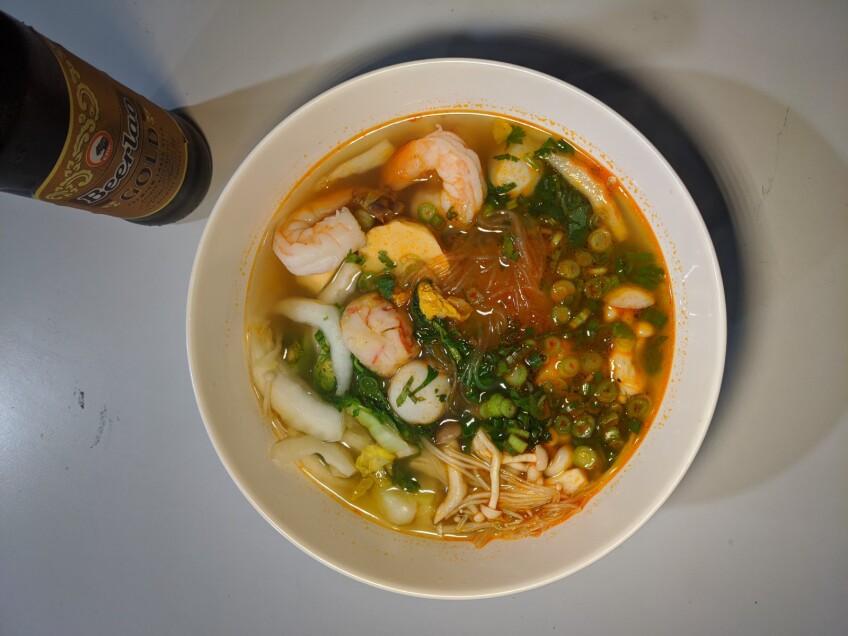
A bowl of PhoLaoSouphy sukiyaki stands as kind of a snapshot in time, and Soulisak puts on no charades as far as its pedigree. "I wouldn't call sukiyaki an authentic Lao dish. Plus, I think most dishes came from somewhere else. When Lao people were refugees and came to the U.S., they had to evolve and find ingredients that were similar to what they were trying to cook at the time. So it evolved through the refugee experience. Our food here is different from the food in Laos as well," he explains.
If you order a bowl of Khao Soi from Soulisak and expect a coconut curried egg noodle soup with braised chicken as from a Thai restaurant, you'd be sorely disappointed — or not. After all, Soulisak's version may be different, but it's every bit as delicious. Rice noodles are used, for one, but they rest in a clear pork broth underneath sautéed fermented soybeans, dried chilis and minced pork.

These days, Soulisak is concentrating on selling his special Lao sauces and limited supply of beef jerky, made by his mom who still lives in Virginia. The conundrum he finds himself in whenever the temperatures pick up is that his hot noodle soup business is noticeably down. So he is limiting his appearances for the time being to the Mar Vista farmer's market on Sundays from 9 a.m. to 2 p.m. As the summer sun subsides and the temperatures come back down, he plans to start up his mobile PhoLaoSouphy operation, again — whether a food truck or a pulled kitchen trailer. And he will continue to be available to cook at private events.
Wherever his recipes are served, Soulisak knows he owes his success to his mother. "My mom is the most pessimistic person in the world, but even her example shows that things can happen from nothing. Even the dishes I come up with on my own, a lot of it is influenced by what I remember her cooking to be, so I credit her for a lot of it — especially the ability to know what is good. Everybody can cook but if you know what's good or not, that's what makes the difference between cooking and entertaining," he says.




